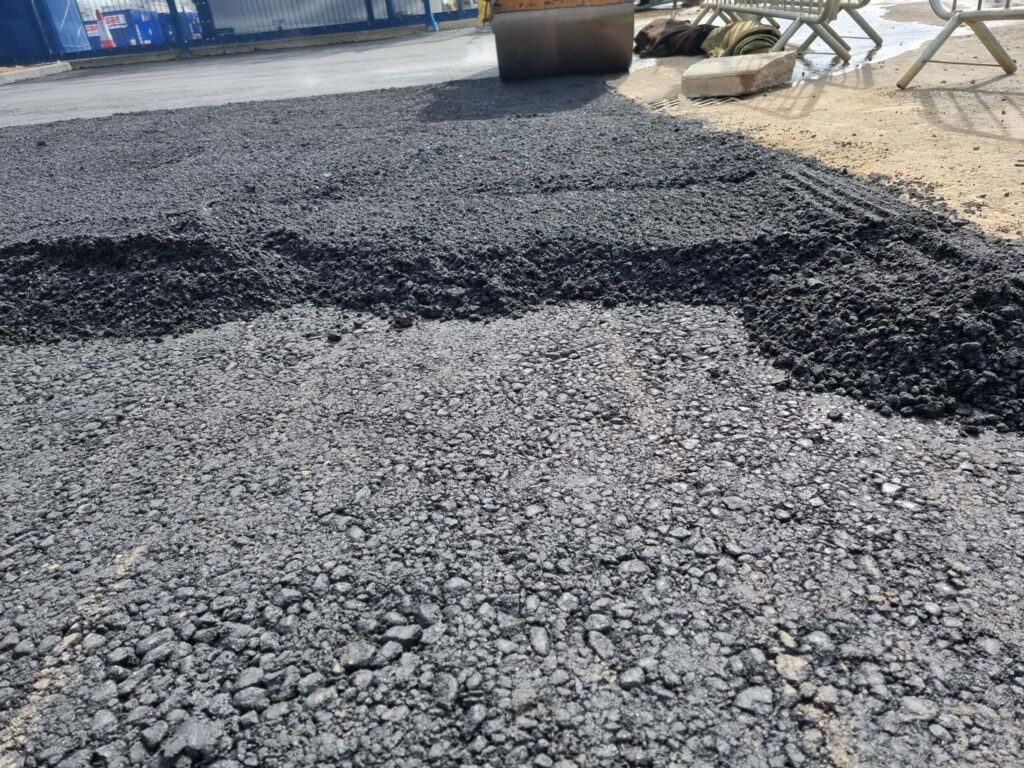Tarmac vs. Asphalt: Clarifying the Differences
Introduction: Tarmac and asphalt are two terms that are often used interchangeably when discussing road surfaces. However, they are not the same, and understanding their differences can help you make informed decisions regarding driveway or road construction. In this blog post, presented by Mundford Driveways & Surfacing, we will clarify the distinctions between tarmac and asphalt.
Tarmac:
- Composition: Tarmac, short for tarmacadam, is a specific type of road surfacing material that dates back to the early 20th century. It is made from a mixture of crushed stone or aggregate mixed with tar, a black, sticky substance derived from coal.
- Appearance: Tarmac surfaces are typically smooth, sleek, and black. They are known for their uniform black colour, making them instantly recognisable.
- Durability: Tarmac driveways and roadways are durable and can withstand heavy traffic. However, they may require more frequent maintenance and resealing compared to asphalt.
- Maintenance: Tarmac surfaces are susceptible to damage from oil or fuel spills, which can soften the tar. Regular maintenance, including cleaning and resealing, is essential to keep the surface in good condition.
Asphalt:
- Composition: Asphalt, on the other hand, is a broader term that refers to a mixture of aggregates (usually sand, gravel, and crushed stone) combined with a binder. This binder is usually asphalt cement, a petroleum-based substance.
- Appearance: Asphalt surfaces can vary in colour, with shades of grey, brown, or even reddish-brown. The colour can be influenced by the type of aggregate used and the specific asphalt mix.
- Durability: Asphalt is highly durable and can withstand heavy loads and extreme weather conditions. It generally requires less frequent maintenance compared to tarmac.
- Maintenance: Asphalt surfaces are more resistant to oil and fuel spills, making them a preferred choice for commercial and industrial applications. They still benefit from regular maintenance but tend to be more forgiving.
Key Differences:
- Binder: The primary difference between tarmac and asphalt is the binder used. Tarmac uses tar as its binder, while asphalt uses asphalt cement, a petroleum-based product.
- Colour: Tarmac is uniformly black, while asphalt can have varying colours depending on the mix.
- Durability: Asphalt is generally considered more durable and requires less frequent maintenance than tarmac.
- Susceptibility to Spills: Tarmac is more susceptible to oil and fuel spill damage than asphalt.
Choosing the Right Option:
The choice between tarmac and asphalt depends on various factors, including your specific project needs, budget, and maintenance preferences. While tarmac has unique characteristics, asphalt is often preferred for its durability and versatility.
Mundford Driveways & Surfacing can help you make the right choice for your project. Whether you opt for the timeless appeal of tarmac or the durability of asphalt, our experienced team can ensure a high-quality installation that meets your needs.
Conclusion: Tarmac and asphalt are valuable materials in road and driveway construction, each with its own characteristics and advantages. Understanding the differences between these two materials allows you to make informed decisions when planning your next surfacing project. At Mundford Driveways & Surfacing, we are here to provide expert guidance and deliver top-notch results, no matter which option you choose.
Call us on: 01842 778 593
Click here to find out more about Mundford Driveways & Surfacing
Click here to complete our contact form and see how we can help with your driveway needs.

